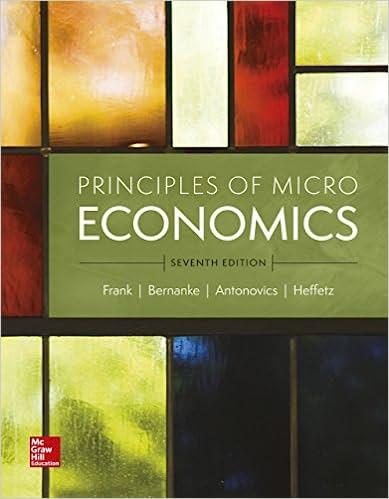Question
PART A 1.a)Define the term derived demand . Hint:See Chapter 14 of Mateer & Coppock. b) Discuss a resource used in the production of a
PART A
1.a)Define the termderived demand.
Hint:See Chapter 14 of Mateer & Coppock.
b) Discuss a resource used in the production of a product or service produced by your workplaceorin the production of a product or service you use. Please do not discuss oil or gasoline or a resource used in an example in the text. Also, do not discuss the occupation you expect to work in after you obtain your degree from UIU because this is the subject of the Week Six Demand for Labor Report. Include a list of three final products/services that use this resource and a least one possible substitute for the resource. Also, discuss whether the derived demand for this resource is rising or falling.
PART B
2.a)Define the termsnegative externalityandpositive externality.
b) Discuss a real-world example of a either a negative externality or a positive externality that is associated with a good or service you consume and/ora good or service produced by your workplace and/or that affects you as a third party. Who are the first, second, and third parties associated with that externality?
PART C
.a)Define the termprivate good.
b) Discuss a real-world example of a private good that you use and/or is produced by your workplace. Also discuss whether that good is excludable or non-excludeable as well as whether that good is rival or non-rival. Be sure you explain why the good is either excludable or non-excludeable as well as why the good is either rival or non-rival.
PART D
| UNIT 6
For example, you coulddiscuss how the course conceptscan be applied tospecificreal-world situations you encounter at home, at work, or in other real-world situations.
|
Our Unit 6 Learning Outcomesare to:
- Use a supply and demand model to determine market equilibrium and the effects of market changes.
- Identify market conditions where government intervention may be needed to achieve an optimal outcome.
- Relate supply and demand analysis to government intervention (taxes and subsidies to remedy externalities).
- Evaluate the effect of private property rights in varying economic organizations.
Step by Step Solution
There are 3 Steps involved in it
Step: 1

Get Instant Access to Expert-Tailored Solutions
See step-by-step solutions with expert insights and AI powered tools for academic success
Step: 2

Step: 3

Ace Your Homework with AI
Get the answers you need in no time with our AI-driven, step-by-step assistance
Get Started


